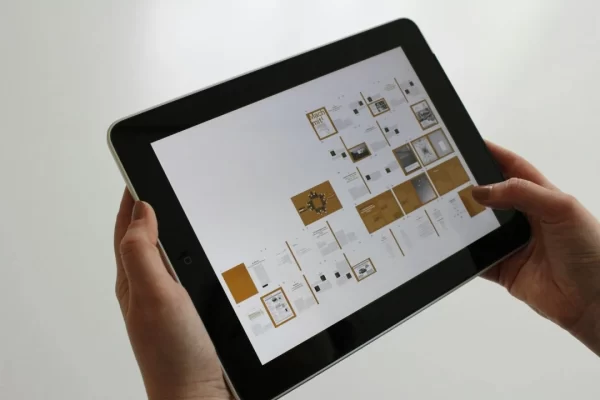Although UX and UI are used interchangeably quite often, they are completely different things. However, both of them are equally important when designing a website or app.
If you’re determined to learn what UX and UI mean and how they differ from one another, you’ve come to the right place! Here’s everything you need to know about UX and UI.
User Experience (UX) Design
Even though the concept of user experience has been around forever, it wasn’t until the digital world went into full boom that the idea of User Experience (UX) design came into being.
Many different factors determine the experience of a user on an app or website. The ease and smoothness with which a user can use, understand, and navigate a site or app ultimately influence their satisfaction.
The purpose of UX designing is to consider the entire journey of a user in solving a particular problem; what steps do you need to take? What tasks do you need to complete? How easy or straightforward is the experience?
Most of the work of UX designers revolves around finding out what problems users come up against, and how a certain feature or aspect of a website can help solve it. UX design requires extensive user research that helps provide detailed information about who the target users are and what they are searching for in a certain product. This information is then employed to map out and tailor the journey of the user, considering factors such as how the content is organised and laid out on the website, depending on the features users will require.
Not only does UX designing determine the structure of an interface, but it also determines its functionality and organisation; how one part of a website is relevant to another. In simple terms, UX design includes developing a blueprint for how an interface should work. If it works well and offers a seamless experience, users will have high satisfaction levels, but if the navigation is complicated, users will have a poor experience.
UX design also entails quite a bit of iterative analysis. UX designers create a wireframe of their interface interactions to receive user feedback, which they integrate into their designs. They do this because it is crucial for them to have a holistic understanding of how users prefer to interact with a website or app.
In a nutshell, here is what User Experience (UX) is:
- It is a detailed process of building and enhancing the quality of interaction between a user and all the aspects of a website.
- In theory, UX is a cognitive science practice, but it is widely used and applied in the digital industry.
- UX design isn’t only focused on visual, but it also focuses on the feel of the overall experience.
User Interface (UI) Design
Even though this term has been around in the field for a really long time, it is still difficult to understand as it is often misinterpreted. While user experience (UX) is a combination of tasks that focus on optimising a website to ensure a smooth user experience, user interface (UI) is its complement that gives a website its look, feel, and interactivity.
User Interface (UI) is basically the graphical layout of a website or an application. It comprises the options and buttons users click on, text entry fields, the images they see, the text they read, sliders, and any other items that a user interacts with when logging on to a website or app. It also includes the entire layout of the screen, interface animations, transitions and every micro-interaction. Even the smallest visual element, animation, or interaction on a website or app is specifically designed via UI design.
User Interface is designed by UI designers who are graphic designers that design websites or apps. From the shape of a button to the color scheme and even the fonts used for text; every single thing is decided by a UI designer.
The main objective of a User Interface designer is to make an app as attractive, aesthetically-pleasing, visually-stimulating, and thematically-appropriate as possible. They need to focus on ensuring that all the visual elements of a website or app are united, both aesthetically and in purpose.
UX vs. UI
Since UX designers are also concerned with the user interface (UI) of a website or app, it causes confusion between the two.
Is it smooth and easy-to-use or is it confusing? Does the navigation of the website feel logical or is it arbitrary? Does interacting with the site give users the idea that they are effectively accomplishing tasks or does it feel like a struggle?
The answers to these questions; the ease or difficulty with which a user interacts with a website’s interface and elements designed by a UI designer, ultimately determines their experience, which is where the confusion arises. However, a simple way to understand the difference between the two is thatUI designers focus on how an interface should look, while UX designers are responsible for determining how a user interface operates. The skeleton of a website or an app is mapped out by a UX designer, while a UI designer brings it to life.
UI design accounts for all the visual and aesthetical aspects of a user’s journey, including any touchpoints that a user may encounter, such as scrolling a page, tapping a button, or swiping through images. On the other hand, UX designers determine the functionality and inclusivity of all these options to ensure their cohesiveness in order to deliver an enthralling experience to users.
Even though both UX and UI design revolve around different skillsets, they are still crucial for each other’s success. A brilliantly-tailored user experience with a bad user interface can sink an app or website into the ground and a beautiful design can’t save a clunky and difficult-to-navigate interface. The UI and UX design of your website or app should be perfectly aligned and flawlessly executed to deliver an excellent experience to your target audience.



